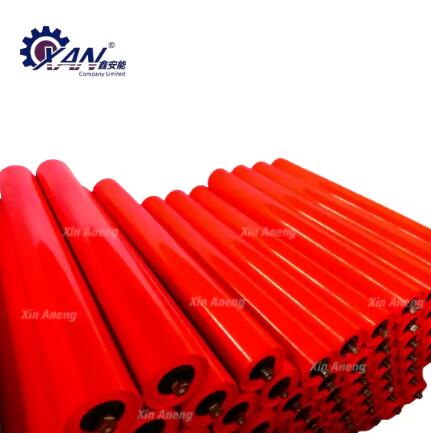Understanding the Role of Return Idler Rollers in Conveyor Systems
2024-09-02
In the world of material handling, conveyor systems play a crucial role in moving goods efficiently across short and long distances. One essential component of these systems is the return idler roller. While often overlooked, return idler rollers are vital in maintaining the smooth operation of a conveyor system. In this blog, we’ll dive into what return idler rollers are, their function, and why they are so important in ensuring the longevity and efficiency of conveyor belts.
What is a Return Idler Roller?
A return idler roller is a cylindrical component used in conveyor systems. Unlike carrying rollers, which support the loaded portion of the conveyor belt, return idler rollers are located on the underside of the conveyor to support the empty, returning belt. These rollers help maintain belt alignment and prevent sagging, which can cause unnecessary wear and tear on the belt.
Key Functions of Return Idler Rollers
1. Supporting the Return Belt: The primary function of return idler rollers is to support the conveyor belt as it returns to the starting point after unloading its material. Without these rollers, the belt would sag, leading to increased friction, potential misalignment, and premature wear.
2. Reducing Belt Sag: Return idler rollers help keep the belt taut by minimizing sagging. This is particularly important for long conveyor systems where gravity can cause the belt to dip between support points. A well-maintained return idler system ensures that the belt remains level, reducing strain on the belt and the drive motor.
3. Maintaining Belt Alignment: Properly aligned return idler rollers ensure that the conveyor belt runs straight and true. Misalignment can lead to belt tracking issues, where the belt veers off course, potentially causing damage to the belt edges and the conveyor structure.
4. Enhancing Conveyor Efficiency: By reducing friction and wear, return idler rollers contribute to the overall efficiency of the conveyor system. This translates into lower energy consumption, reduced maintenance costs, and extended equipment life.
Types of Return Idler Rollers
There are several types of return idler rollers designed to meet different needs in various industries:
1. Flat Return Rollers: These are the most common type and are used for flat belts. They provide basic support for the returning belt.
2. V-Return Rollers: V-return rollers are used for belts that require more support to maintain their shape. They are particularly useful in heavy-duty applications where the belt carries bulkier materials.
3. Rubber Disc Return Rollers: These rollers feature rubber discs that help prevent material buildup on the roller surface, which can lead to belt tracking problems. They are ideal for applications involving sticky or abrasive materials.
4. Self-Cleaning Return Rollers: These rollers are designed to automatically remove debris and buildup, reducing the need for manual cleaning and maintenance. They are particularly useful in environments where material spillage or carryback is a concern.
Why Maintenance Matters
Proper maintenance of return idler rollers is crucial for the efficient operation of conveyor systems. Regular inspection and lubrication can help prevent common issues such as:
- Bearing Wear: Over time, the bearings in return idler rollers can wear out, leading to increased friction and potential failure. Regular lubrication and replacement of worn bearings can extend the life of the rollers.
- Misalignment: Periodically checking the alignment of return idler rollers can prevent belt tracking issues. Misaligned rollers should be adjusted promptly to avoid damage to the belt and conveyor structure.
- Material Buildup: In certain industries, such as mining or agriculture, material buildup on rollers can be a significant issue. Cleaning or replacing rollers with self-cleaning designs can help mitigate this problem.
Conclusion
Return idler rollers may not be the most glamorous component of a conveyor system, but their role is undeniably critical. They ensure the smooth, efficient operation of the conveyor belt, reducing wear and tear, and minimizing energy consumption. By understanding the importance of return idler rollers and maintaining them properly, businesses can ensure the longevity and reliability of their conveyor systems, leading to reduced downtime and operational costs.



